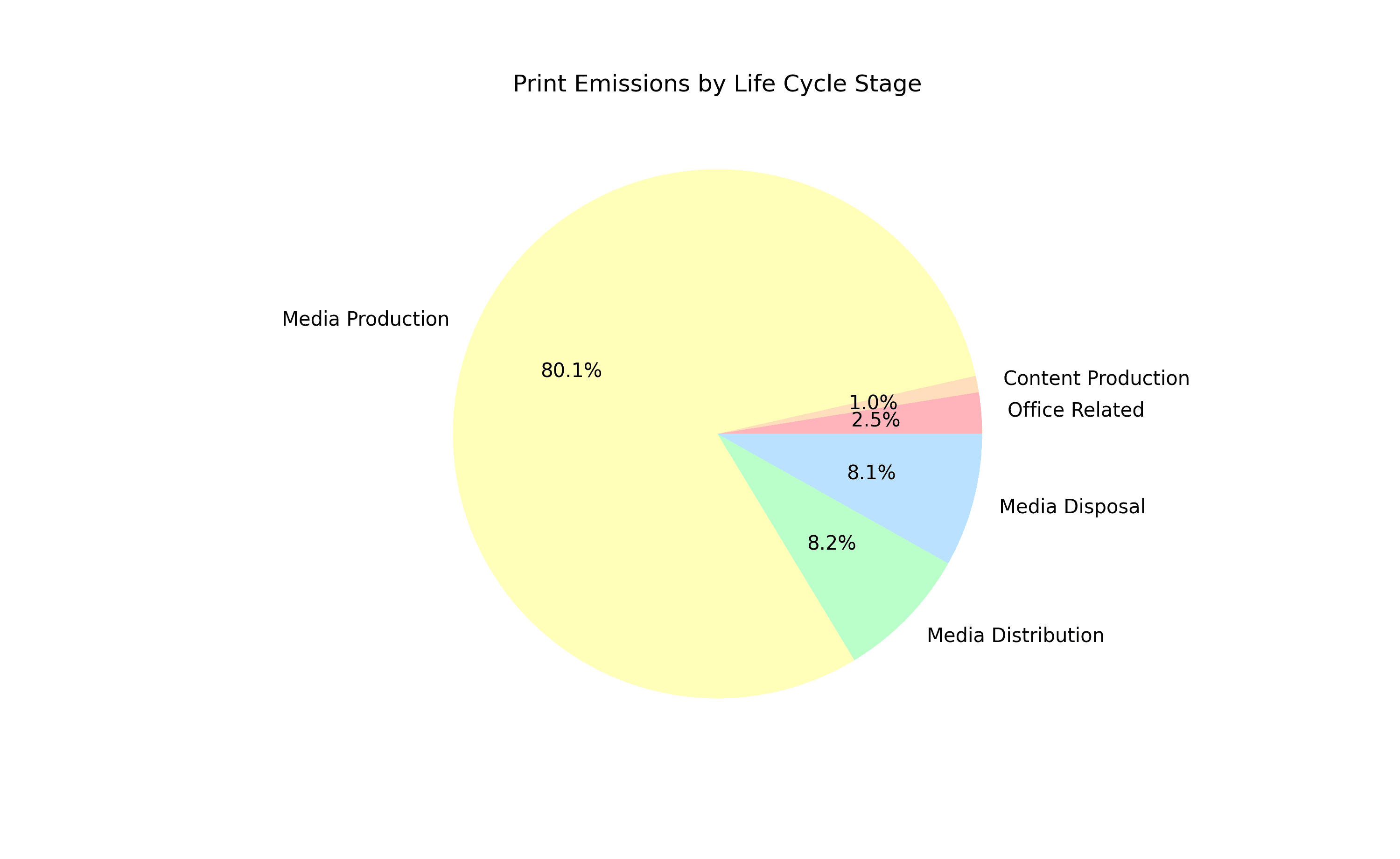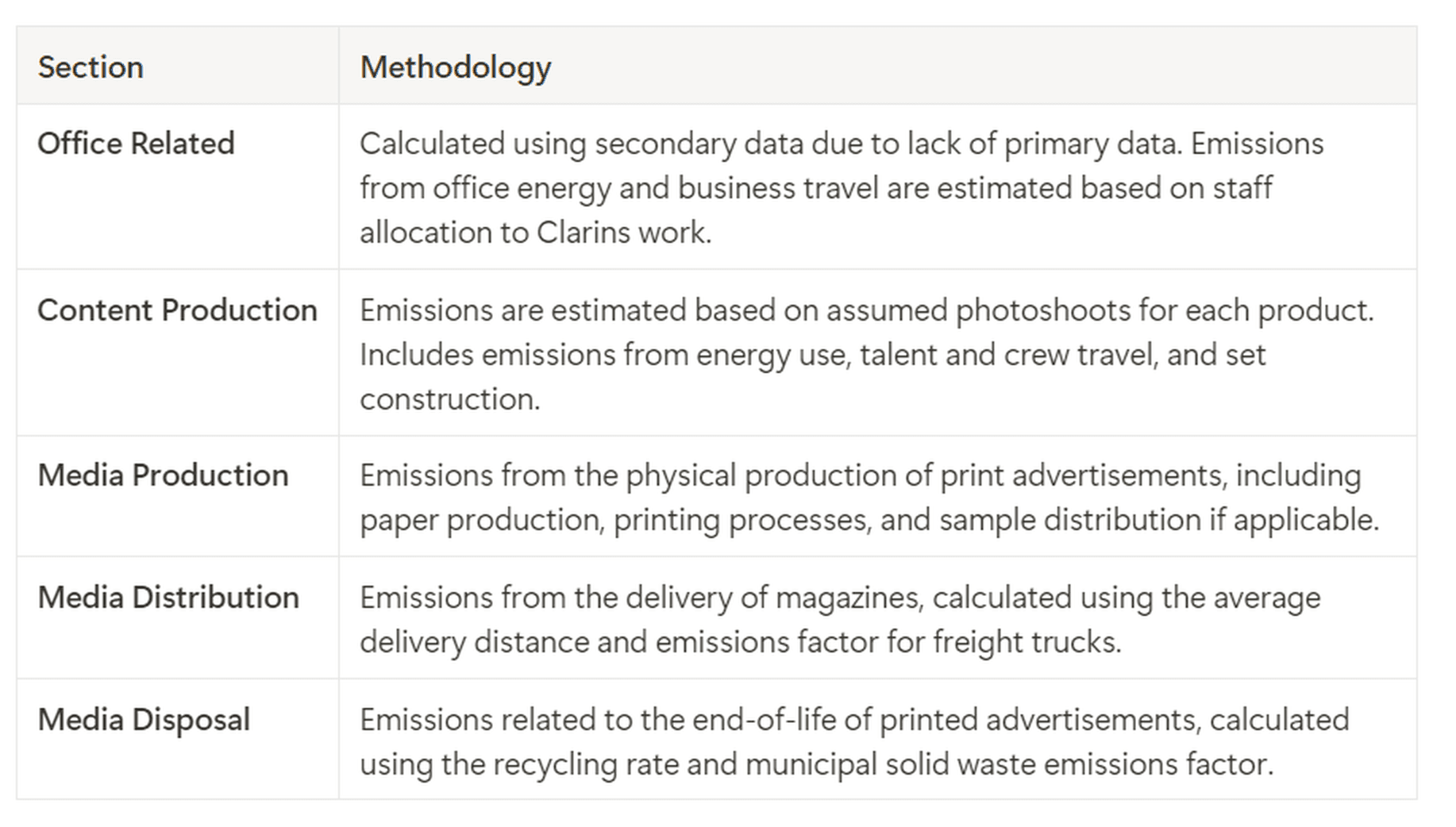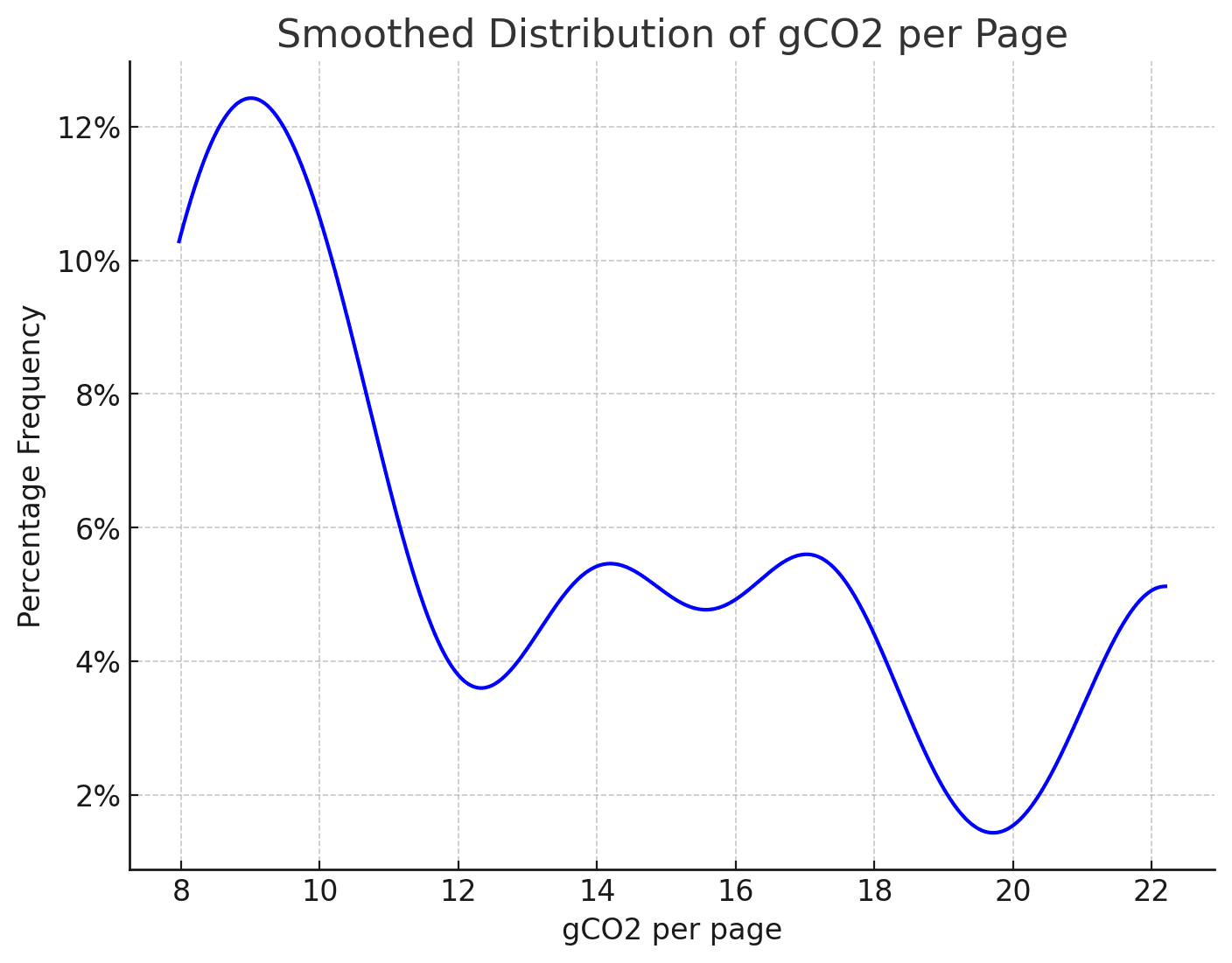Sep 22, 2024
Fairglow measures the carbon footprint of cosmetic products. Everything related to cosmetic products. This means even measuring the impact of advertising.
Every day we are bombarded with a never-ending barrage of media designed to get us to purchase more products. Billboards, TV ads, digital ads, or even the sample products in tiny sachets you receive in magazines are forms of marketings. Like all human activity, each advertisement has an environmental impact. But exactly how polluting is marketing for cosmetic products? Is it big source of emissions or small?
Join us for our 4-part series on marketing emissions, where we reveal key findings from our 2023 research with a major French cosmetic brand.
What media did we research and how?
The scope of our research into marketing emissions included four different media marketing modalities. The modalities and their emission sources are defined below :

Other marketing modalities exist, like Event Marketing, or Radio advertisements for example. We tailored our research to the above four modalities because our research partner utilized media in each of the modalities above to advertise their products. Our client's overall emissions from marketing looked like this, with over 50% of all their emissions coming from their printed media in magazines!

For clarification and precision in our research, we broke down each of these marketing modalities into 5 distinct life cycle stages to improve the granularity of our study. The life cycle stages - Office Related, Content Production, Media Production, Media Distribution, and Media Disposal - are defined below :

Office Related: office activities such as energy demands, employee commuting, and business travel. These are the emissions accounted for simply operating an office related to your marketing.
Content Production: activities related to photoshoots such as materials, catering, and equipment. Any emissions related to the creative production of an advertisement.
Media Production: physical and digital (servers analytics, network traffic, storage data providers) production of media. These are emissions related to the physical production of the advertisement, or in the digital sense.
Media Distribution: physical (delivery vehicles, postal services) and digital (data transfer digital vendors, consumer device emissions) distribution of media.
Media Disposal: the disposal of vinyl, paper or other physical materials.
These definitions help us to organize our research and are based on our review of the following helpful resources:
SRI France
Ad Green
DIMPACT
Scope3
Now that we have an understanding of how the data is structured, we can jump into specifics on our first modality; Print advertising.
Part 1: Emissions from Print Advertising
A print advertisement is any form of printed media, such as a magazine or newspaper advertisement. In our study, magazines were the media of choice. Some of the magazines had little cosmetic samples attached which were also taken into consideration.
Here’s how the total emissions panned out for print advertisements.

Note that they centred largely around the production of the physical media. Also note that to protect the identity of our client, we will publish only the proportions of impacts, not the exacts.
Each of these life cycle stages are defined briefly here:

Estimating emissions from printed media involves undertaking a full-scale LCA for each magazine provider. The brand we worked with advertised in dozens of magazines; conducting an LCA for each was deemed out of scope. Therefore, to determine the emissions per magazine advertisement, Fairglow used a series of assumptions based on existing literature. Here’s how we calculated the most critical life cycle stage of print media, the media production stage.
Media Production
Determining the emissions per magazine page involves a myriad of modelled assumptions, such as where the fibres for the paper were sourced, the printing method, the binding method, and location of the production facilities. We made these assumptions based on market research for magazine production. We assumed a distribution of paper size between 90 GSM paper, and 190GSM paper. We assumed the size of the magazine paper to be fixed at A4 size (210x297mm).
We took the results from previous LCA studies on paper production emissions and used a kernel density estimation algorithm to smooth the assumed emissions per printed page. The results showed an average value of carbon emitted per page printed.

Using these values, we multiplied the total number of advertisement pages, by the total number of magazines published to arrive at total emissions for paper production for the advertisement.
Our studied brand also sent samples with some of their printed advertisements. We used Fairglow’s carbon management software to estimate the emissions per product sample sachet to add to the overall advertising production emissions.

This is an example of a product in the Fairlglow platform, not one of the sample products used in the study.
Media Distribution
On top of the production of paper; the printing and samples, the shipment of the magazine was accounted for as well. Our studied brand was distributing these magazines in France. We used industry standard freight information and information regarding the average distance of travel for each magazine to arrive at a final value for media distribution. Weighted for consumption frequency, the average upstream distribution distance for the French magazines was a small 141km.
Media Disposal
The life cycle stage known as End-of-Life is extremely complex to model in nearly any circumstance. There has been a lot of research done on the end-of-life scenarios for paper products, and we adopted an approach that utilized the following assumptions for the end-of-life for the paper advertisements:
Considered landfilling, incineration and recycling rates in France.
Considered Open-loop recycling for the material recycled
Considered energy recovery from incineration of paper products
Considered the transport necessary to waste facilities
The recycling rate for most journals and magazines hovers around 70% in Europe. We used that figure along with an ecoinvent emission factor for solid waste disposal to come to a total emission for disposed media
Other Life Cycle Stages
The other life cycle stages modelled, Office Related and Content Production, were small in the printed media case. We will discuss more in the following article, where we discuss how the marketing of Out Of Home advertisements (billboards and the like) are calculated.




